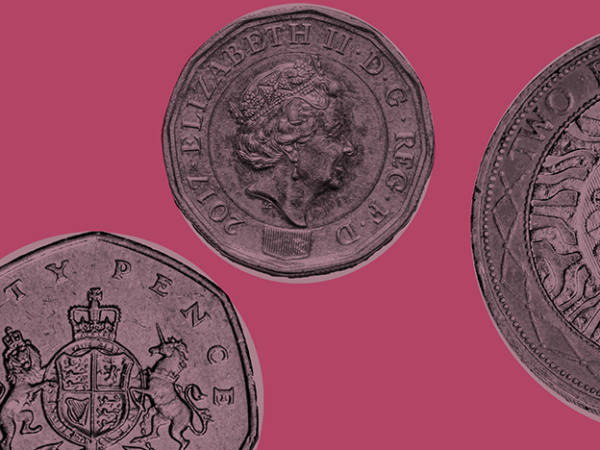The Beverly Hilton. At the crossroads – they say ‘intersection’ in Los Angeles – of Wilshire and Santa Monica boulevards, it is one of Hollywood’s major landmarks. It’s where the ‘A’ listers of screen and television gather every January for the Golden Globe awards, which rank second behind the Academy Awards for prestige. On a darker note, it’s where Whitney Houston was found dead in the bath in Suite 434 in 2012.
Back in the 1980s, the Beverly Hilton was the place for which you wanted a room key if you fancied yourself as an apprentice master of the universe, a putative mover and shaker in the world of finance. Because it was where the real masters gathered once a year for a combination of work and play that came to be labelled ‘The Predators’ Ball’. A jamboree of corporate raiders, investment bankers, private-equity managers and the hangers-on got together to brag, hint and collude to their hearts’ desire. And the show was presided over by the undisputed master, the high priest of high-yield debt, the man who really did make a billion from selling junk – Michael Milken.
Michael Milken was so successful because he asked a simple question that no one else had bothered to pose: does the extra yield on high-yield debt fully compensate for the extra risk? No one asked the question because in the early 1970s high-yield debt was to the securities markets what drain-pipe trousers were to fashion. For fixed-interest stock – bonds that pay a fixed dividend each year and mature at a defined date – there were really only two sorts. First, there was government debt, which was effectively risk free; then there was investment-grade debt, high quality bonds issued by corporate blue chips such as IBM or Procter & Gamble.
Yet, actually, there was a third type of fixed-interest stock. Forgotten and unloved – though plentiful – there was high-yield debt. Colloquially known as ‘junk’, this was usually investment-grade debt whose issuers had fallen on hard times, which made the payment of dividends and repayment of principal less likely. However, ‘less likely’ did not mean ‘completely unlikely’. Milken, the financial obsessive who had learned bookkeeping on his father’s knee as a child, churned the numbers and found that the extra yield on junk bonds more than compensated for the higher risk of default. In other words, put together a diversified portfolio of junk bonds and, on average, it would produce better returns than a portfolio of investment-grade bonds.
That insight made junk bonds a good investment, for which Milken and his employer, a US investment bank, Drexel Burnham Lambert, started to make big money as brokers and traders in the mid 1970s. Milken was so successful he could insist that Drexel’s high-yield operation re-locate from New York to California, his home state, which is why the Predators’ Ball came to the Beverly Hilton.
Then Milken went one better. He realised that if second-hand junk bonds were a good investment, then issuing new junk bonds would be a great way for companies and investment funds to raise new capital. The promise of sound returns meant there would be buyers. As to the appetite for the extra capital, there was a generation of would-be corporate raiders itching to extend their reach – all they needed was the fire power. Milken’s team supplied the funds, the raiders got to work. The likes of Carl Icahn, Nelson Peltz, T. Boone Pickens, who are still agitating companies today, all used Milken’s junk-bond machine as did a list of notables who are no longer with us, including the UK’s James Goldsmith.
Milken, however, overreached himself. His aggressive money-raising tactics plus those of the corporate raiders he supplied meant he was rarely far from controversy or the watch of the US securities-industry regulators. Those regulators got a lucky break in 1986 when they collared Ivan Boesky, then a big name in corporate raiding, for insider dealing. As part of his plea bargain, Boesky shopped Milken, implicating him in stock-price manipulation and insider dealing, too. Although a charge sheet of 98 counts was whittled down to six charges on which Milken pleaded guilty, he got 10 years plus $1.1bn in fines and restitution payments.
In the event, Milken served just 22 months, has survived prostate cancer and no longer wears the toupee for which he was ridiculed when he was at Drexel. He has also gone a long way to repairing his reputation. That’s partly through massive donations to medical charities; partly because he has built up another fortune, providing education services via KinderCare Education; and partly because junk bonds are synonymous with corporate raiding, which has almost become respectable. Nowadays it’s often described as a social good because it releases capital trapped in inefficient enterprises and diverts it to where it gets the best returns.
Such sentiments may well be self serving. Sure, junk bonds are still with us. Who could forget the role they played in the US sub-prime crisis of 2008-09 where high-yield bonds were re-packaged into collateralised debt obligations of such complexity that no one knew who bore the risks or how much?
That said, they clearly have a purpose. In so far as risk and reward go together, then – compared with investment-grade debt – junk bonds promise higher returns on average though only over the long term for those with the requisite capital and the resilience. And they are within retail investors’ reach, whether as individual securities – there are about 180 retail bonds listed on the London Stock Exchange, many of which count as ‘junk’ – or within exchange traded funds, of which several are London listed. Something to get your teeth into if you reckon you’d have a ball as a would-be predator.










